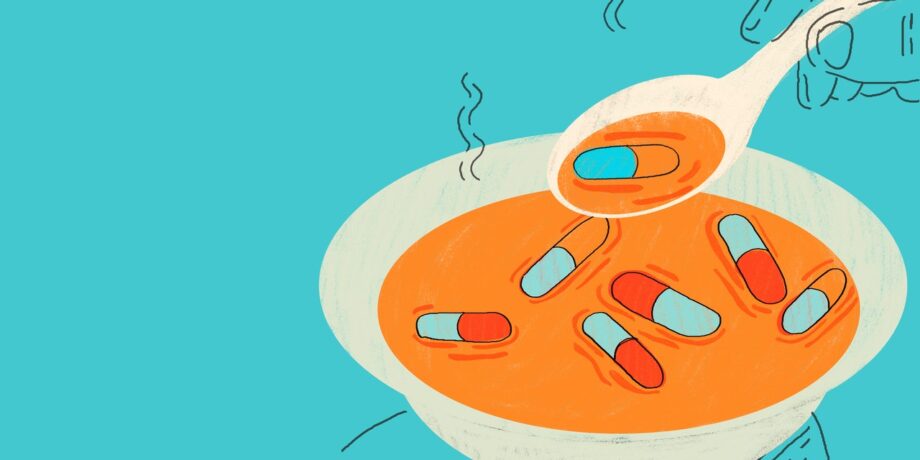That doesn’t mean you have to stick to a traditional breakfast, lunch, and dinner arrangement, she notes. Study how your appetite or hunger cues fluctuate throughout the day and over the course of about a week. If you notice your appetite is most active in the mornings, lean into that craving and schedule your biggest meal then, Morin says. Or maybe you have a hard time tolerating heavier meals, so you can plan to munch on smaller snacks throughout the day.
3. Try nutrient-dense smoothies, drinks, or soups.
If you just can’t bring yourself to eat solid food, consider whipping up a smoothie, a hearty bowl of soup, or other foods that slide down easy. Morin says it can help you feel full faster and longer and “pack a punch of calories for a small volume.” She suggests adding some olive oil or cream to your soups for healthy fats, and tossing nut butter or spinach in your smoothies for protein and vitamins.
If the foods you can stomach aren’t necessarily all-stars in the nutrition department or you’re trying to get more variety, you can try mixing nutritious options with your palatable foods, Morin says, like sprinkling fruit over yogurt (or ice cream!). You can also buy pre-made protein shakes or nutritional supplement drinks like Boost and Ensure if they go down easier and you want to save energy by skipping the food prep step.
And don’t sleep on a bowl of creamy mashed potatoes! Spuds are high in vitamin C and potassium and are considered a “complete protein,” which means they contain all nine essential amino acids that your body can’t produce on its own. (If you make it a sweet potato, you get some vitamin A too.) So in addition to being fairly cheap and easy to prepare, they can do a lot for you nutritionally.
4. Opt for cold or room temperature foods.
Sometimes your medication-induced nausea can make your mouth water in that I’m about to barf kind of way. In this case, a big ol’ plate of warm steak and mashed potatoes that’s wafting strong notes of butter and garlic may only lessen the odds you eat anything. So instead, go for cold or room-temperature foods, Garcia recommends, because they’re less likely to have potent smells that might turn you off.
Cheese and veggies like carrots or celery sticks are solid options that are easy to pick at with your hands, don’t need to be prepared, and offer a nice boost of protein, calcium, and vitamins, Garcia says. Dry cereal is another good option because it tends to be fortified with the nutrients you need and won’t force any unwanted scents up your nose.
5. Drink fluids throughout the day—but not too much.
Hydration is always key to staying healthy and just feeling good overall, but if you’re dealing with a funky appetite, you’ll want to be extra mindful about drinking enough water—just don’t overdo it. That’s because dehydration can shrivel your appetite even more, but drinking too much all at once or too close to mealtimes stretches the walls of your stomach, which sends “I’m full” messages to your brain, Morin says. So maybe take a few days to log your water intake and reflect on how it’s affecting your appetite; you might be able to pick up on patterns that can help boost your desire to get some food in your system. You can also try snacking on hydrating foods like watermelon as opposed to things like salty chips, which may prompt you to quench your thirst a little too rapidly.
6. Make mealtimes enjoyable.
Family dinners and brunch with your friends should stay on the menu, even if you can’t bring the appetite you once had. In fact, more (hopefully fun!) social gatherings that are centered around food might give your appetite a boost, Morin says. Research shows that people who eat with others tend to consume more compared to when they’re dining alone because you’re more likely to share food or feel more relaxed and joyful in these scenarios. That said, it can be a little awkward to stare at others chomping on their meal without doing the same. So maybe start with at least one social meal a week, Morin suggests, and see what it does to your food intake.







